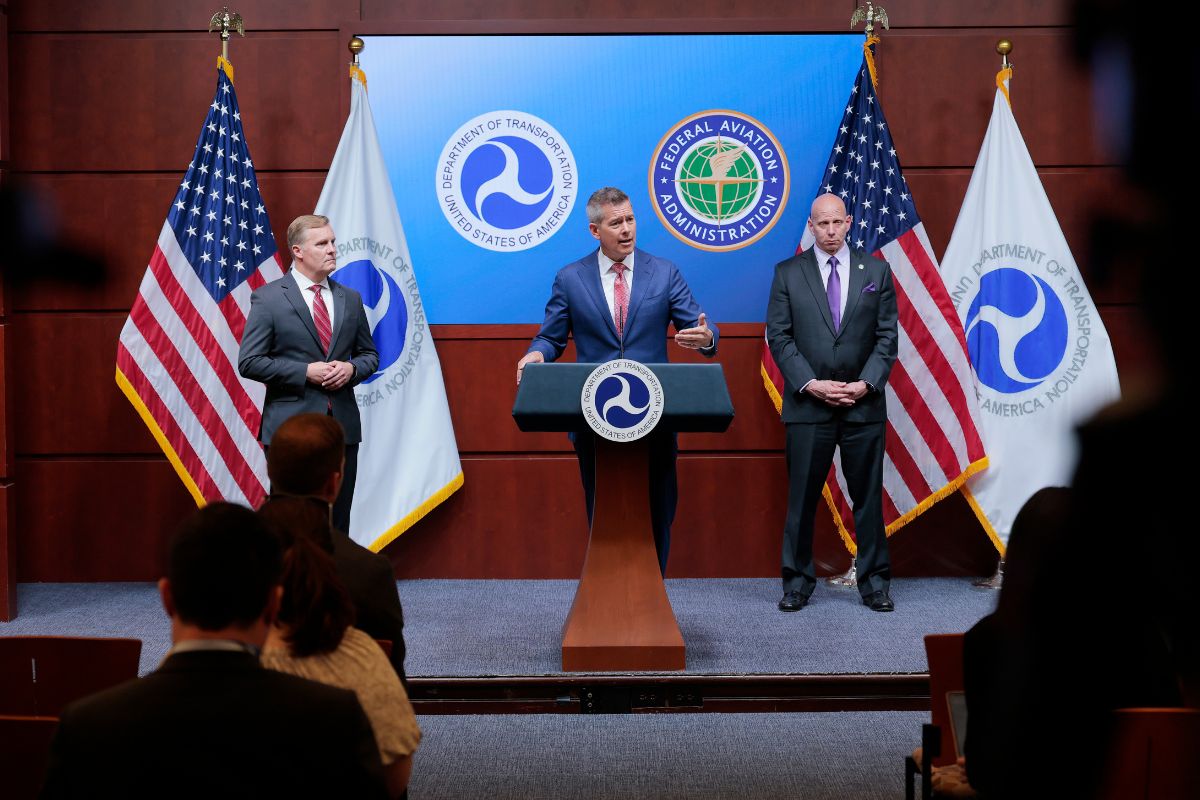Smart Tips for Traveling Without Paying Extra Airline Fees - Consumer Reports
A few months ago, I made a rookie mistake: I got excited when I saw a reasonable airfare to Europe. It didn’t have 12 layovers, and the airline was one I’d heard of before. With visions of canals and cathedrals dancing in my head, I began clicking through departure flight options to purchase tickets. And then reality set in. If I wanted to book a return flight that didn’t depart at 1 a.m., I’d have to pay an additional $900. Choosing seats so that my family and I weren’t separated by dozens of rows would also cost more. Heaven forbid I needed to change my ticket; I’d have to pay even more money on top of that.
Airline price gouging has become so common that the Department of Transportation has a term for it: “unk fees.”
According to the Bureau of Transportation Statistics, domestic airfares in the U.S. have decreased by about 38 percent since 2000—but fees for additional airline services (ancillary revenue) have skyrocketed. Since 2010, major airline carriers have increased costs for several optional services, such as for checking baggage and changing or canceling a reservation. From 2010 to 2016, airline revenue from these two fees increased from $6.3 billion to $7.1 billion (in 2016 dollars), according to the U.S Government Accountability Office.
With some exceptions (such as Spirit Airlines’ Go Travel fare), most major airline carriers allow you to take one carry-on bag and one personal item that fits below the seat in front of you without paying extra fees. Whenever possible, only pack what you can fit into carry-on luggage, and wear your bulkiest items (like boots, a sun hat, coat, or jacket) on the plane to avoid taking up extra space. Instead of folding items, roll soft clothes that don’t wrinkle easily to accommodate more in your luggage. Wrinkle-prone items can be rolled with tissue paper, placed in a dry-cleaning bag layered with tissue paper, or put in a large trash bag and laid across the top of your luggage.
For flights on most major carriers like American, Delta, and United, the standard size for carry-on bags is 22x14x9 inches, but check the airline you’re flying on for its specific dimension requirements. Some airlines, such as Frontier and Southwest, allow for slightly larger carry-ons that are 24x10x16 inches. Use packing cubes to organize items and help them fit better into your carry-on luggage.
Pack smaller purses in your luggage and use a weekender bag, travel backpack, or duffel bag as your one personal item. A larger bag can accommodate all of those little things you can’t fit in your carry-on. (I always pack my toiletries and laptop in my backpack, for example.)
Jessica Nabongo, a travel expert, the author of “The Catch Me If You Can” and the first Black woman to travel to every continent, country, and state according to National Geographic, says the BÉIS Weekender Bag is her go-to personal item for traveling light. “It is the perfect thing,” she says. “So I put that on top of my Away Carry-On. I like that bag because you can put shoes in the bottom. You can maximize packing. I can easily travel for a week and a half with those two bags together.”
Read CR’s review of the BÉIS Weekender Bag and others here.
Before packing, I take out the items I want to wear on my trip and think about ways I can reuse the same pieces and style them differently so that I maximize the potential of each top, pants/shorts, shoes, and even bags and accessories.
I save these images in an iPhone Photos folder called “Trip Outfits.” I have a firm rule: if I can’t find two or three ways to wear an item, it doesn’t make the cut into my carry-on luggage. This tip has saved me money on baggage fees and the stress of trying to figure out what to wear each day.
All major airlines charge fees for overweight checked baggage—some as much as $200. Keep your bag below 50 pounds to avoid charges, and consider purchasing a luggage weight so that you aren’t confronted with unhappy surprises at the airport (like a customer service or gate agent weighing your bag to discover it’s over the weight limit). This portable pick only weighs 3.5 ounces, so it won’t add a lot of additional weight to your load. It has a weight limit of 110 pounds, which is perfect because at least nine of the major U.S. airline carriers have a checked luggage weight limit of over 50 pounds and won’t allow bags that weigh more than 100 pounds.
CR’s Ginger Cowles says she has had to scramble a couple of times to redistribute items at the airport to avoid extra fees. “I paid $100 to check a slightly overweight bag back from Oahu because we are on a tight deadline,” Cowles says. “Now, as a best practice, I keep a thin but roomy foldable duffel bag in my luggage for such emergencies.” The duffel bag can then be placed in your carry-on luggage or personal item or checked, which costs far less than paying fees for an overweight bag.
Katy Nastro, a travel expert and spokesperson for the Going Travel App, says she suggests considering an airline credit card only for the immediate benefits it includes, such as free checked bags. She says airline cards can also come with discounts on in-flight food and beverages and are free for certain cardholders and/or loyalty members. American Airlines Citi®/Aadvantage, for example, offers 25 percent off eligible in-flight purchases (including food and beverages), and the JetBlue Card offers 50 percent off eligible in-flight purchases.
Nabongo also recommends using credit cards that yield airline points and flying benefits (such as free checked bags): “I always say make your money work for you. And the best way you can do that responsibly is via credit card. The biggest thing for me is everyday spending. So whether you’re buying gas, groceries, whatever, by putting it on that card, and paying your card in full at the end of the month, you are actually going to access free travel.” She says that this year alone, she has probably used about 300,000 to 400,000 airline miles and 300,000 credit card points.
If you’re open to renting a house or apartment at your destination, find one with a washer and dryer, which allows you to pack fewer items and clean them as needed. Some hotels offer self-service laundry rooms, so it’s worth researching whether yours provides this service before packing more clothing than necessary.
Hayley Berg, lead economist at the travel app Hopper, says that when you’re still in flight-booking mode, using a price monitoring tool to set price alerts for your specific route can help you manage your costs. “Plug in the destination and dates you’re looking at and the app will alert you as soon as prices drop and a good deal is detected,” she says. Berg recommends booking domestic flights six to eight weeks before departure and international trips several months in advance.
Some airlines charge fees for airport assistance and for printing boarding passes at the check-in counter. For example, Frontier Airlines charges up to $25 per passenger, per direction, to get help from airport agents, including for services like printing boarding passes and tagging bags. Allegiant Air charges $5 to have a boarding pass printed out at select domestic airport locations. Print boarding passes at home or download the airline’s app so that yours are safely on your phone.
Late June is a very popular time for travelers in the U.S. to travel abroad, according to Berg. “Airfare to top destinations across Europe, Asia, and more regions is high during the month of June as demand surges,” she says. “Shifting travel to late August or September can reveal substantial savings for savvy travelers.”
According to Berg, you can save as much as 20 percent on airfare by flying in the middle of the week. “Flying on a Sunday is typically the most expensive day of the week for travelers, whether they are headed out on a trip or returning home,” Berg says.
Flexible travelers can save hundreds of dollars on a domestic trip or an international adventure, according to Berg.
Nabongo says she uses sites like Thrifty Traveler and Airfare Spot to find great deals when she isn’t committed to traveling to a specific destination. “Those are great because they’re basically just telling you what’s on sale,” she says. “So it’s just flight deals. I often will tell people to chase the deal, not the destination.”
With the exception of Southwest (which doesn’t sell food), five major U.S. airlines charge for meals and some snacks when you fly in economy. You’ll save money (and probably eat food you like more) by either buying food at the airport before you board or packing your own snacks and meals for the flight. These food silicone storage bags can help keep your meals fresh.
JetBlue and Southwest don’t offer free headphones onboard (JetBlue will sell you a set). Check beforehand if the airline you’re flying offers headphones or blankets, and bring your own to avoid paying fees.
Many people trying to save money default to the lowest fare they see, which is the basic economy fare class. While it can be as much as $100 less expensive at times, it also has fewer benefits, mainly the inability to make changes without an additional fee, according to Nastro.
“Airfare can fluctuate immensely, especially when booked so far out,” Nastro says. “We at Going always advise people to reconsider the basic fare and opt for the main economy fare so they can take advantage of price drops. If you get the alert from our app that your flight price has dropped, you can then call the airline and have them rebook you at the new lower fare, to then pocket the difference in credit for future flights.” A win for now and a win for later, so you are still saving overall.
“We often think we need to purchase seats right away, especially for families, to ensure you can all sit together,” Nastro says. “With the Airline Family Seating Dashboard, families should fly in confidence that they aren’t forced to pay for one child 13 or under to sit next to one adult at the very least. Major airlines have come forward and distinctly said they will commit to this policy, and will do everything in their power to ensure families fly alongside one another.”
According to the Department of Transportation, the airlines that currently guarantee adjacent seats for a child 13 or under and an accompanying adult at no additional cost are Alaska, American, Frontier, Hawaiian, and JetBlue. There are conditions that have to be met in order to qualify for the Airline Family Seating Dashboard. These include that the child and family adult must be booked on the same reservation, adjacent seats have to be available at the time of booking, the aircraft can’t be substituted for a smaller aircraft, adults must either choose seats for the entire reservation or skip seats for the entire reservation (and changes to seat assignments can’t be made), and the plane’s seat layout must be able to accommodate specific seating requests.
If you aren’t flying with a child, Nastro says you don’t have to be forced into purchasing a seat, especially when seat maps can change even after check-in. “I personally check it each hour on the day of to snag a better seat than when I originally booked,” Nastro says. “I also would advise asking the gate agent politely. It’s not a guarantee, but it can’t hurt to ask … nicely!” Just be aware that this method could result in you dooming yourself to booking a middle seat.
Car seats are generally free to travel with onboard and to check, and Nastro says they can be valuable real estate. Opt for a car seat cover that can hold some additional contents inside when checked.
Lisa Fogarty is a multimedia content creator at Consumer Reports. She studied journalism at Columbia University and has written numerous health, parenting, fitness, and wellness articles for The New York Times, Psychology Today, Vogue, and NPR. Lisa is passionate about mental health and is a co-creator of The Hunger Trap Podcast, which focuses on eating disorders. In her spare time she surfs, plays the guitar, and kickboxes. Follow her on X: @lisacfogarty










